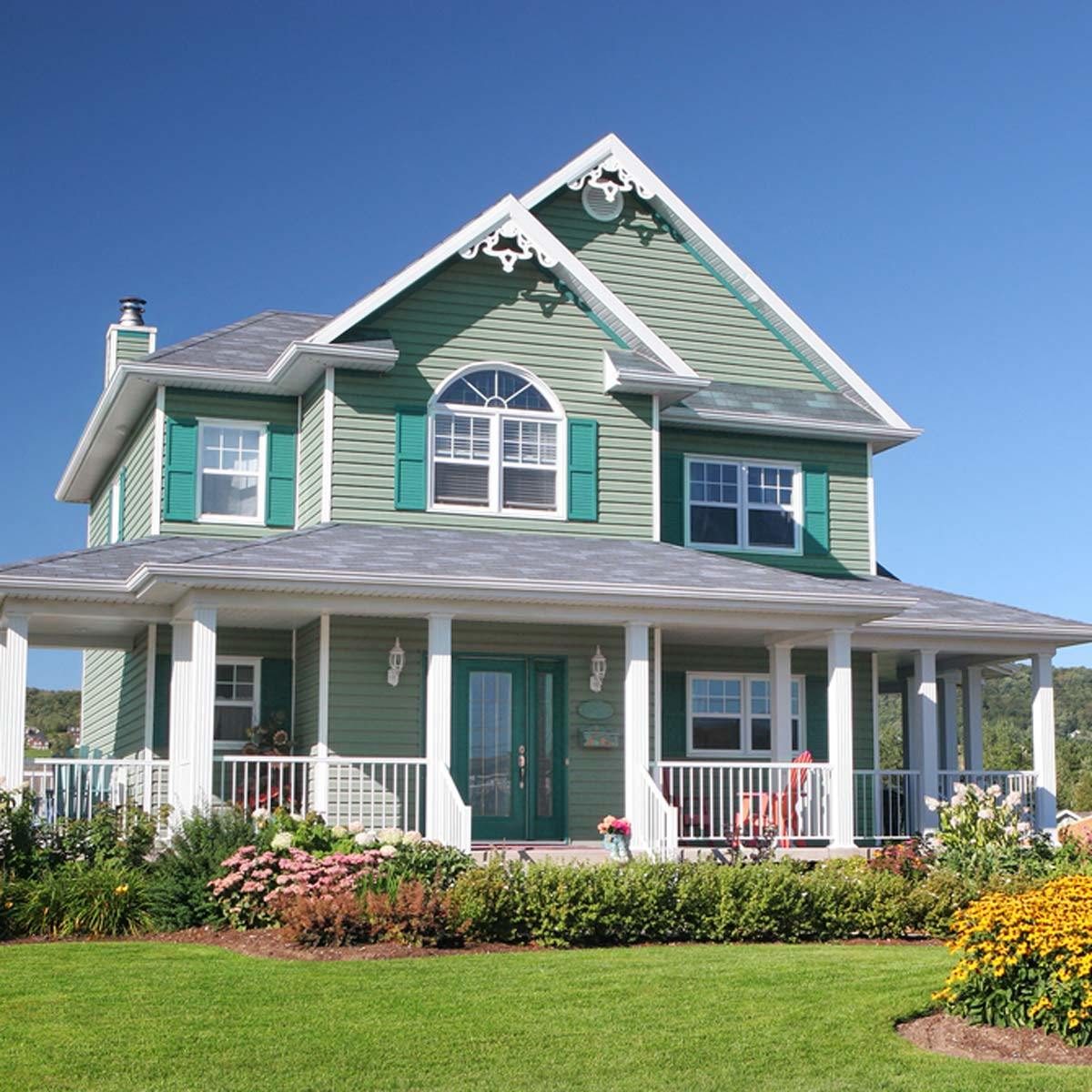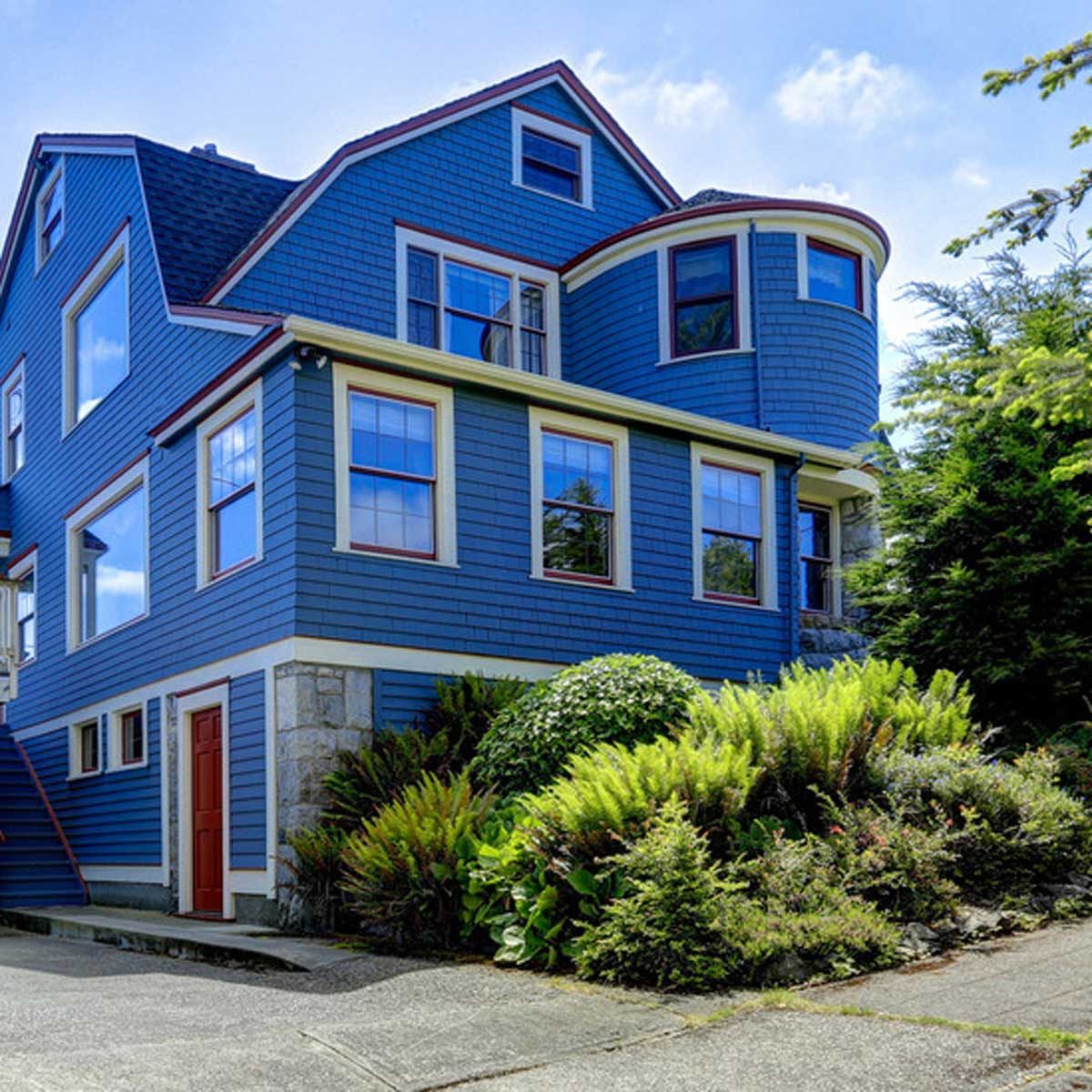House Colors Ideas Exterior Nz
 Are you thinking about giving your home a new look? One of the most dramatic ways to do it is by changing the color of your house's exterior. The right color can enhance your home's architecture, make it stand out, and even increase its value. But choosing the perfect hue can be a daunting task. To help you out, we've compiled a list of the 19 most popular exterior colors, based on surveys, trends, and expert opinions. Keep reading to find the one that suits your style and personality.
Are you thinking about giving your home a new look? One of the most dramatic ways to do it is by changing the color of your house's exterior. The right color can enhance your home's architecture, make it stand out, and even increase its value. But choosing the perfect hue can be a daunting task. To help you out, we've compiled a list of the 19 most popular exterior colors, based on surveys, trends, and expert opinions. Keep reading to find the one that suits your style and personality.
How to Choose the Right Exterior Color
Before diving into the options, it's essential to know what factors to consider when picking an exterior color. First, think about the style and age of your home. For example, if you have a classic Victorian or Colonial-style house, you might want to go for a rich, deep color that accentuates the details and adds elegance. On the other hand, if you have a mid-century modern or ranch-style home, a lighter and more neutral color could complement the clean lines and minimalist design.
You should also take into account the colors of the surrounding landscape and neighborhood. If you live in a forested area, you might want to choose a color that blends in or contrasts with the trees and foliage. If you live in a coastal area, you might consider a shade that evokes the sea or sand. However, don't forget to take your personal taste and preferences into consideration—after all, you're the one who will be living in the house and enjoying the view every day.
Another thing to keep in mind is the color scheme of the rest of your property, such as the roof, doors, shutters, and trim. Ideally, you want to create a harmonious palette that ties all the elements together. You can achieve this by either choosing colors that match or complement each other or by opting for contrasting colors that create a powerful contrast. For example, if you have a red brick house, a black or white trim can provide an elegant contrast, or a cream or beige trim can create a softer, more cohesive look.
Lastly, consider the practical aspects of the color, such as its durability and maintenance requirements. Some colors fade faster or chip more easily than others, especially if your house is exposed to harsh weather conditions or direct sunlight. Some colors also require more frequent cleaning and touch-ups than others, so make sure you factor in the long-term upkeep costs and efforts.
The Most Popular Exterior Colors
Without further ado, here are the 19 most popular exterior colors that homeowners love:
- White
- Gray
- Beige
- Blue
- Green
- Black
- Brown
- Red
- Cream
- Tan
- Yellow
- Orange
- Pink
- Purple
- Magenta
- Teal
- Sage
- Burgundy
- Navy
As you can see, the list includes a wide range of colors, from classic neutrals to bold and bright shades. Let's take a closer look at some of them and see how they can affect the overall look of your home.
White
If you want a timeless, fresh, and versatile color, white is always a safe bet. It can make your house look bigger, brighter, and more welcoming. It also goes well with any other color, so you can add pops of contrast or texture with the trim, the roof, or the landscaping. However, keep in mind that white can also show dirt, stains, and imperfections more easily than darker colors, so you might need to clean and maintain it more often.
Gray
Gray has become increasingly popular in recent years, and for a good reason. It's sophisticated, modern, and blends well with natural materials such as stone, wood, and metal. It also comes in a range of shades, from light and airy to dark and dramatic, so you can customize it to your taste and preference. Additionally, gray is a great backdrop for colorful accents, such as a red door, a yellow flower bed, or a blue mailbox.
Blue
Blue is a calming, serene, and refreshing color that can evoke the sky, the ocean, or the countryside. Light blues like turquoise, sky blue or baby blue can make your house look cheerful and playful, while navy, cobalt, or royal blue can add a bold and stylish touch. Blue also complements many other colors, such as white, gray, beige, brown, and green, so you can mix and match hues to create a cohesive and balanced look.
Green
Green is another soothing and natural color that can blend seamlessly with the environment. Depending on the shade, green can convey different moods and styles. Sage, olive, or moss green can create a rustic and homespun vibe, while emerald, grass, or lime green can add a modern and fresh twist. Green also pairs well with earthy tones, such as beige, brown, or terracotta, as well as with contrasting colors, such as red, yellow, or pink.
Tips & Tricks for Painting Your House's Exterior
Now that you have some inspiration on what color to choose, it's time to get down to business and actually paint your house. Here are some tips and tricks to make the process smoother and more successful:
- Check the weather forecast and pick a dry, mild day with low humidity to paint. Avoid extreme temperatures or windy conditions that can affect the paint's adhesion and drying time.
- Clean and prep the surfaces first by removing dirt, mildew, rust, or loose paint. You can use a pressure washer, a scraper, or sandpaper, depending on the condition of the material. Also, cover any plants, furniture, or fixtures that you don't want to get paint on.
- Use high-quality paint and tools to ensure a smooth, even, and durable finish. Invest in brushes, rollers, and sprayers that match the size and texture of the surfaces you're painting. Follow the manufacturer's instructions for the recommended number of coats, drying time, and clean-up.
- Apply the paint in a methodical and consistent way. Start from the top of the house and work your way down, using long, horizontal strokes. Paint one area at a time and overlap the edges slightly to avoid visible lines. Don't paint in direct sunlight, as it can cause the paint to dry too quickly and create uneven patches.
- Take breaks and hydrate regularly. Painting can be a strenuous activity that exposes you to fumes, dust, and sun, so make sure you wear protective clothing and gear, including a mask, gloves, and sunglasses.
Frequently Asked Questions (FAQ)
Here are some common questions that homeowners ask about painting their house's exterior:
How long does exterior paint last?
It depends on various factors, such as the quality of the paint, the climate of the area, the exposure to UV rays and moisture, and the level of maintenance. On average, exterior paint can last between 5 and 10 years, but some types can last up to 25 years or more. However, it's important to inspect your house's exterior regularly and touch up any chipped, cracked, or faded areas to prevent further damage.
What's the best paint for the exterior of a house?
There is no one-size-fits-all answer to this question, as the best paint for your house depends on your budget, your location, and your personal preferences. Some popular brands and types of exterior paints include Sherwin-Williams Duration, Behr Premium Plus Ultra, Benjamin Moore Aura, Valspar Reserve, and PPG Timeless. Make sure you choose a paint that is specifically formulated for the exterior, has good coverage and adhesion, and is resistant to fading, mildew, and peeling.
Can I paint my own house's exterior?
Yes, you can, but it's not necessarily an easy or quick task. Painting a house's exterior requires patience, skill, and safety precautions. If you've never painted before, it's recommended that you practice on a small area first or hire a professional painter to guide you. Also, keep in mind that painting your own house could void your warranty or insurance if the results are not satisfactory or if you damage the property or the surrounding areas.
Can I repaint my house a different color?
Yes, you can, but it might require some extra steps and costs. If you're painting a light color over a dark color or vice versa, you might need to prime the surfaces first to ensure good coverage and adhesion. You might also need to remove the old paint entirely or use a paint remover if it's flaking, peeling, or chalking. Additionally, you might need to apply more coats of paint to achieve the desired color, which could increase the cost of the project.
Do I need to follow any local laws or regulations when painting my house's exterior?
Yes, you should check with your local authorities and homeowner's association to see if there are any rules or restrictions regarding the color or style of your house's exterior. Some neighborhoods have specific guidelines or historic preservation requirements that limit the choice of colors or materials. Additionally, some states or counties have VOC (volatile organic compound) regulations that limit the amount of VOCs that paints and coatings can emit, so make sure you choose a low-VOC or zero-VOC paint if necessary.
In conclusion, painting your house's exterior is an exciting and rewarding project that can transform your home's look and feel. By following these tips, tricks, and guidelines, you can choose the perfect color, prepare the surfaces, and paint like a pro. Happy painting!


Post a Comment for "House Colors Ideas Exterior Nz"